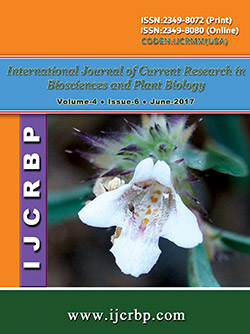 |
Online ISSN : 2349-8080 Issues : 12 per year Publisher : Excellent Publishers Email : editorinchiefijcrbp@gmail.com |
This study was conducted to characterize dominant soil type at Dakawa Irrigation Scheme (DIS), Tanzania. Typical soil at DIS was identified, excavated and described using FAO (2006) Guidelines. Six disturbed samples were taken from soil profile horizons together with three undisturbed core samples for laboratory analysis. The pedon developed from Neogene alluvial parent materials under ustic moisture and isohyperthermic temperature regimes. The pedon was very deep (> 150 cm), moderately well drained, with gray to very dark gray soil colours. CaCO3 concretions characteristic of calcic horizon were observed in subsoil. Soil texture was sandy clay loam throughout the pedon. pH was rated as medium (5.5 - 7.0) to very high (7.0 - 8.5) respectively for topsoil and subsoil. OC and N levels were very low; CEC and exchangeable bases were low to medium. Bulk densities were high (1.8 gcm-3) to very high (>1.9 gcm-3) for topsoil and subsoil, respectively. Study on moisture retention properties showed that subsurface (95 - 100 cm) and intermediate (45 - 50 cm) horizons retained more water than surface (0 - 5 cm) soil, congruent with increasing clay content with depth. According to Soil Taxonomy and World Reference Base for Soil Resources, pedon at DIS classified as Vertic Calciustepts and Haplic Vertic Cambisols, respectively. These taxa reflect properties that may guide use and management of soils at DIS including selection of crops and fertilizers and rates to use. Organic fertilizers were recommended to increase organic matter content in soil. Use of acidifying inorganic fertilizers and gypsum as soil amendments should also be taken onboard to correct emerging sodicity.
